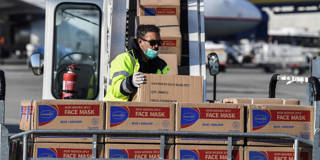Just as a chain is only as strong as its weakest link, so the failure of a single country to contain COVID-19 heightens the global risk. Countries with stronger health systems must now urgently assist their weaker counterparts, which in turn should readily accept any aid that helps them tackle this deadly global threat.
SINGAPORE – No health system in the world has the surge capacity to cope with an influx of tens of thousands of patients in a matter of weeks, as is the case with the COVID-19 pandemic. Add in the fact that about one in seven people diagnosed with the virus will require hospitalization, and that about one in 20 will need mechanical ventilation, and you have a recipe for systemic overload and breakdowns.
If developed countries with efficient health systems are struggling to mount an effective response to COVID-19, then what hope do far weaker systems have? After all, poorer countries generally lack the technology, training, and resources to find those infected with the virus, isolate them in suitable facilities to minimize onward transmission, and treat them adequately in order to minimize morbidity and mortality.
These countries also tend to be weaker in standard epidemiological responses such as contact tracing, as well as in procuring and ascertaining a steady supply of personal protective equipment (PPE) for frontline health-care workers. True, more authoritarian regimes (which a number of poor countries undoubtedly are) may be able to impose more stringent forms of mandatory social distancing. But they may be less able to mitigate the negative consequences of such measures, especially for socioeconomically disadvantaged groups.

SINGAPORE – No health system in the world has the surge capacity to cope with an influx of tens of thousands of patients in a matter of weeks, as is the case with the COVID-19 pandemic. Add in the fact that about one in seven people diagnosed with the virus will require hospitalization, and that about one in 20 will need mechanical ventilation, and you have a recipe for systemic overload and breakdowns.
If developed countries with efficient health systems are struggling to mount an effective response to COVID-19, then what hope do far weaker systems have? After all, poorer countries generally lack the technology, training, and resources to find those infected with the virus, isolate them in suitable facilities to minimize onward transmission, and treat them adequately in order to minimize morbidity and mortality.
These countries also tend to be weaker in standard epidemiological responses such as contact tracing, as well as in procuring and ascertaining a steady supply of personal protective equipment (PPE) for frontline health-care workers. True, more authoritarian regimes (which a number of poor countries undoubtedly are) may be able to impose more stringent forms of mandatory social distancing. But they may be less able to mitigate the negative consequences of such measures, especially for socioeconomically disadvantaged groups.